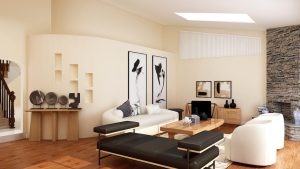
Transform Your Outdoor Space with These Garden Design Ideas
Garden design is an essential aspect of creating a beautiful and functional outdoor space. A well-designed garden can enhance the overall aesthetic appeal of your home, provide a peaceful retreat, and even increase the value of your property. In this blog post, we will explore the latest garden design trends, offer tips for maximizing small outdoor spaces, discuss the importance of functionality and beauty in garden design, and provide ideas for incorporating sustainable practices, attracting wildlife, adding color and texture, creating low-maintenance gardens, using lighting to enhance ambiance, incorporating water features, and reflecting personal style in your garden design.
Introducing the latest garden design trends for outdoor spaces
Garden design trends are constantly evolving, and it’s important to stay up-to-date with the latest ideas and concepts. Currently, there are several trends that are gaining popularity in garden design. One such trend is the use of natural materials and organic shapes. Incorporating natural elements such as stone, wood, and plants with flowing lines can create a harmonious and calming atmosphere in your outdoor space.
Another trend is the concept of outdoor rooms. Instead of treating your garden as one large open space, you can create distinct areas for different activities such as dining, lounging, or gardening. This can be achieved by using hedges or trellises to create boundaries between different areas or by using furniture and accessories to define specific zones.
Maximizing small outdoor spaces with creative garden designs
Having a small outdoor space doesn’t mean you have to sacrifice on having a beautiful garden. With some creativity and careful planning, you can maximize the potential of even the tiniest of spaces. One tip for designing a garden in a small space is to use vertical gardening techniques. This involves utilizing walls or fences to grow plants vertically instead of horizontally. This not only saves space but also adds visual interest to your garden.
Another idea for small gardens is to create a multi-level garden. By using different levels or tiers, you can create the illusion of more space and add depth to your garden. This can be achieved by using raised beds, terraces, or even hanging planters. Additionally, using mirrors strategically placed in your garden can create the illusion of a larger space.
Designing a garden that is both functional and beautiful
When designing a garden, it’s important to strike a balance between functionality and beauty. A garden should not only be visually appealing but also serve a purpose. For example, if you enjoy cooking and entertaining outdoors, you may want to incorporate an outdoor kitchen or dining area into your garden design. This will not only provide a functional space for cooking and dining but also create a beautiful focal point in your garden.
Another way to achieve functionality in your garden design is by incorporating storage solutions. This can be as simple as adding a shed or storage bench to store gardening tools and equipment. Additionally, incorporating seating areas throughout your garden will not only provide a place to relax and enjoy your outdoor space but also add visual interest and functionality.
Incorporating sustainable gardening practices into your outdoor space
Sustainable gardening practices are becoming increasingly popular as people become more conscious of their impact on the environment. Sustainable gardening involves using organic methods, conserving water, and promoting biodiversity. One tip for incorporating sustainable practices into your garden design is to use native plants. Native plants are adapted to the local climate and require less water and maintenance compared to non-native species.
Another sustainable practice is composting. Composting not only reduces waste but also provides nutrient-rich soil for your plants. You can incorporate composting into your garden design by creating a designated composting area or by using compost bins that blend seamlessly into your outdoor space.
Creating a garden that attracts wildlife and promotes biodiversity
Promoting biodiversity in your garden is not only beneficial for the environment but also adds beauty and interest to your outdoor space. One way to attract wildlife is by incorporating native plants that provide food and shelter for birds, butterflies, and other pollinators. Additionally, creating a water source such as a birdbath or small pond can attract a variety of wildlife.
Another tip for designing a garden that promotes biodiversity is to create different habitats within your outdoor space. This can be achieved by incorporating a variety of plants with different heights, textures, and colors. Additionally, leaving some areas of your garden wild and untouched can provide nesting sites and shelter for wildlife.
Adding color and texture to your garden with unique plant combinations
Color and texture are essential elements in garden design as they add visual interest and create a dynamic and vibrant outdoor space. One tip for creating unique plant combinations is to consider the color wheel. By choosing plants that are complementary or contrasting in color, you can create a visually striking display. For example, pairing purple flowers with yellow foliage can create a dramatic effect.
Another way to add texture to your garden is by using a mix of plants with different leaf shapes and sizes. Combining plants with large, bold leaves with those that have delicate, feathery foliage can create an interesting contrast. Additionally, incorporating plants with different textures such as grasses or succulents can add depth and visual interest to your garden.
Designing a garden that is low-maintenance and easy to care for
Not everyone has the time or desire to spend hours maintaining their garden. Luckily, there are several tips and tricks for designing a low-maintenance garden that still looks beautiful. One tip is to choose plants that are well-suited to your climate and require minimal care. Native plants are often a good choice as they are adapted to the local conditions and require less water and maintenance.
Another tip is to incorporate mulch into your garden design. Mulch not only helps retain moisture in the soil but also suppresses weeds, reducing the need for regular weeding. Additionally, using automated irrigation systems can save time and ensure that your plants receive the right amount of water.
Using lighting to enhance the ambiance of your outdoor space
Lighting is an often overlooked aspect of garden design, but it plays a crucial role in creating ambiance and extending the usability of your outdoor space. One tip for using lighting in your garden is to incorporate different types of lighting. This can include task lighting for specific areas such as pathways or seating areas, accent lighting to highlight focal points or architectural features, and ambient lighting to create a warm and inviting atmosphere.
Another tip is to use solar-powered lights. Solar lights are not only energy-efficient but also easy to install as they don’t require any wiring. They can be placed along pathways, in flower beds, or even hung from trees to create a magical and enchanting effect.
Incorporating water features into your garden design for a relaxing atmosphere
Water features such as fountains, ponds, or waterfalls can add a sense of tranquility and relaxation to your garden. The sound of running water can drown out noise from the surrounding area and create a peaceful and calming atmosphere. One tip for incorporating water features into your garden design is to choose a feature that suits the size and style of your outdoor space. For example, a small tabletop fountain may be more appropriate for a small courtyard, while a larger pond or waterfall may be suitable for a larger garden.
Another tip is to consider the placement of your water feature. Placing it near seating areas or in a central location can create a focal point and draw attention to the feature. Additionally, incorporating lighting into your water feature can create a stunning effect at night.
Designing a garden that reflects your personal style and taste
Your garden should be an extension of your home and reflect your personal style and taste. One tip for incorporating your personal style into your garden design is to choose a theme or style that resonates with you. This can be anything from a formal English garden to a tropical oasis. By choosing a theme, you can create a cohesive and harmonious outdoor space.
Another tip is to incorporate personal touches and accessories into your garden design. This can include artwork, sculptures, or even furniture that reflects your personality and adds a unique touch to your outdoor space. Additionally, using color schemes that you love and incorporating plants that have special meaning to you can create a garden that truly reflects your personal style.
In conclusion, garden design is an important aspect of creating a beautiful and functional outdoor space. By staying up-to-date with the latest trends, maximizing small spaces, achieving a balance between functionality and beauty, incorporating sustainable practices, attracting wildlife, adding color and texture, creating low-maintenance gardens, using lighting and water features, and reflecting personal style, you can create a dream garden that enhances the overall aesthetic appeal of your home. So why wait? Start designing your dream garden today!

